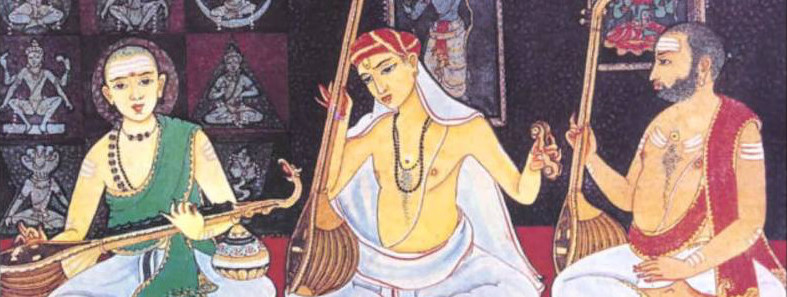Important Terms in Nadopasana / Carnatic Music
The three key elements of Carnatic music are:
- raga: a mode, but it’s more complicated than that
- talam: the rhythmic cycle, generally marked with your right hand as you sing
- bhava: spiritual essence, or divine intention
Further important terms:
- shruti: your pitch. This will vary between singers and even according to the time of day
- swara: a note. The seven swaras are Sa Ri Ga Ma Pa Da Ni
- sahityam: lyrics, mostly written in one of the South Indian langauges (Telugu, Tamil, Malayalam, Kannada) or Sanskrit
- arohana: ascending note order of a raga
- avarohana: descending note order of a raga
- gamakam: ornamentation or embellishment of a swara
- geetham: a song
- varnam: equivalent to a study or étude in Western music, a composition with that encapsulates the essence of a raga
- vaggyekara: composer
The key composers are:
- Thyagaraja, late 18th century, said to be the embodiment of bhava
- Muthuswamy Diskshitar, late 18th century, said to be the embodiment of raga
- Shyama Shastri, late 18th century, said to be the embodiment of talam
- Swathi Thirunal, 19th century, whose compositions are said to embody all three of the essential elements. His descendant Prince Rama Varma is one of the best living Carnatic teachers.
- Purandara Dasa, late 15th to 16th century, who composed the basic exercises that we use in daily practice today
